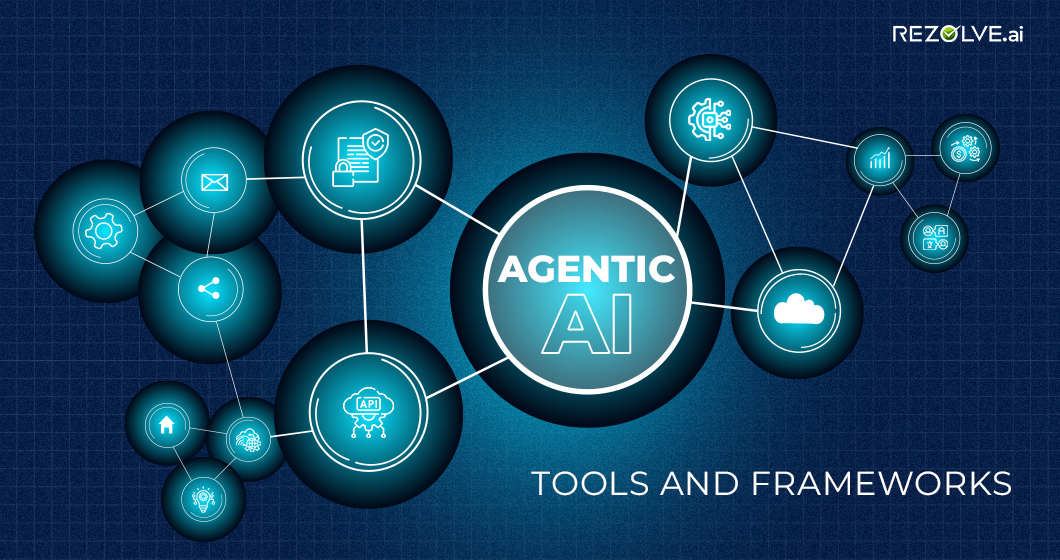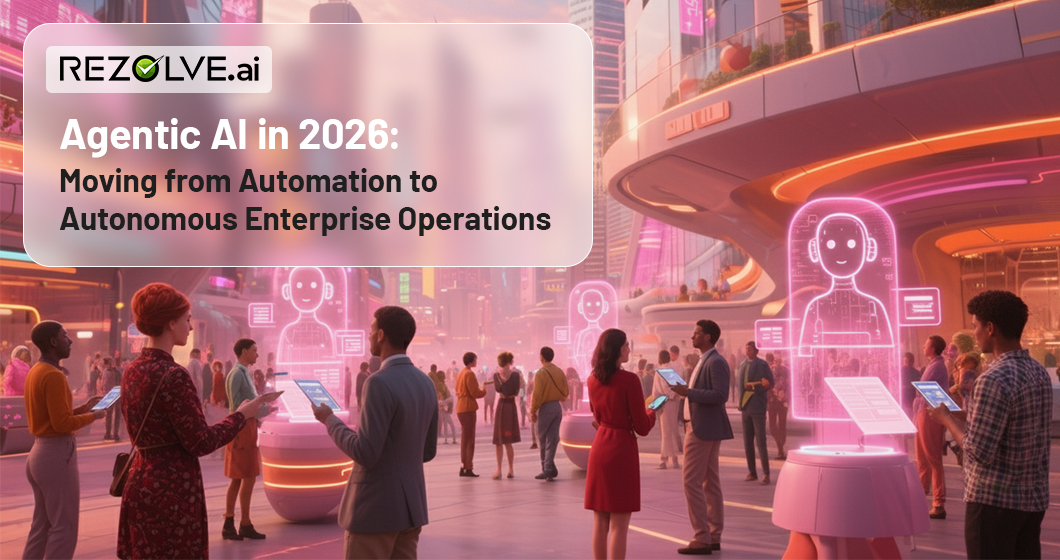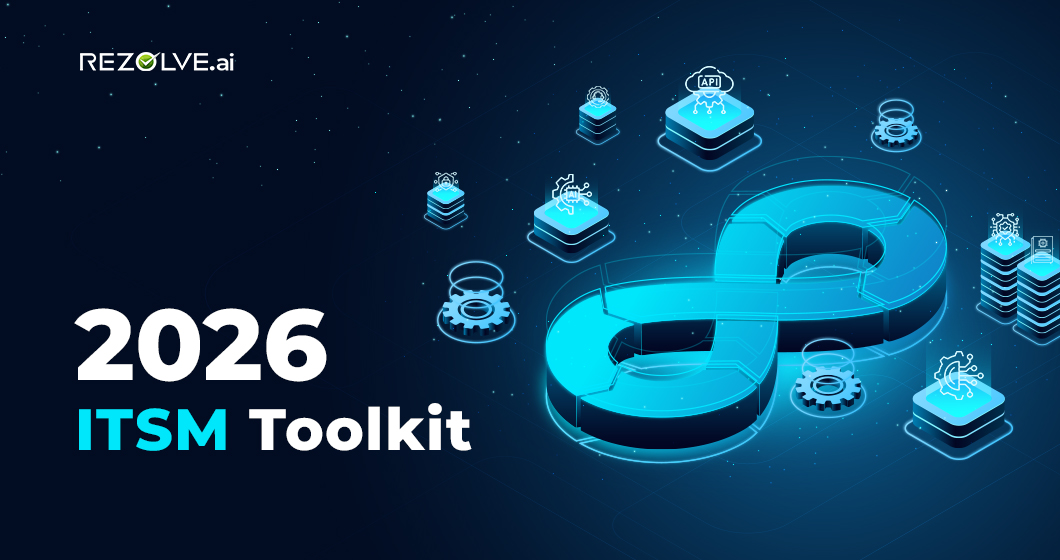Agentic AI has finally crossed from speculative demos into operational reality. All year long, board decks have traded “chatbot” for “digital employee.” At Fortune-500 service desks, managers now measure bot-resolved tickets instead of bot-deflected queries; at startups, founders race to ship products that learn, plan, and act on their own. It is a decisive break from the last era of automation, where scripts waited passively for a human to push the next button.
The reason is simple: 2025’s large-language models can juggle context, tool calls, and memory for hours, not seconds. That endurance lets an AI agent draft a policy update, query your HRIS, schedule approvals, and circle back only when something truly ambiguous appears. CIOs who piloted “agentic” proof-of-concepts in 2024 are now weaving them into core processes because the cost curves and employee expectations have changed for good.
Yet raw model power isn’t enough. Businesses also need governance, observability, and enterprise-grade security. A new generation of agentic AI platforms and frameworks has emerged to supply exactly that: orchestration layers, plug-in marketplaces, no-code builders, and audit logs. Choosing among them can feel like picking a cloud vendor circa 2010—strategic, irreversible, and anxiety-inducing.
This guide demystifies the landscape. First, we unpack what counts as an agentic AI tool and why the concept matters. Then we profile seven standout platforms led by Rezolve.ai’s enterprise-grade Agentic Sidekick 3.0 before closing with a decision framework to help you match the right stack to your own roadmap.
What are Agentic AI Tools and Why They Are Important
Think of an agent as software that owns the entire loop: it perceives a goal, breaks it into tasks, chooses the best tools, evaluates its own progress, and adapts on the fly. Classic bots handled only the perception, replying with canned text and escalating anything complex. Agentic systems finish the job. They schedule a replacement laptop, update the asset register, notify finance, and file the shipping label, all without another prompt.
Three capabilities make that leap possible. First, autonomous reasoning and planning lets agents draft multistep strategies instead of single responses. Second, tool integration allows them to call everything from REST APIs to RPA flows; without tool-calling, an agent is just a verbose search box. Third, explainability and audit trails reassure risk officers that an invisible brain isn’t freelancing in production.
Why does it matter now? The enterprise backlog of repetitive, cross-system work has never been larger—think onboarding, compliance checks, entitlement reviews, and incident response. Agentic AI attacks this backlog without the brittle rigidity of traditional RPA. Early adopters report 30-70 % ticket deflection, 40% faster HR case resolution, and, in Managed-Service-Provider (MSP) settings, double-digit margin lifts.
Just as importantly, agentic frameworks are becoming platforms in their own right, spawning ecosystems of domain-specific “sub-agents,” evaluation suites, memory stores, and monitoring dashboards. Mastering them today is the surest way to future-proof your automation strategy.
What are the Top Agentic AI Tools and Frameworks?
Below is a deeper, clearer run-down of the seven platforms that matter most right now. Each delivers true autonomy, but they differ in architecture, governance posture, and the kinds of problems they excel at solving.
1. Rezolve.ai — Agentic Sidekick 3.0
Rezolve.ai is a platform that plugs directly into Microsoft Teams or Slack. Users converse with a single bot, but behind the scenes domain-specific agents—covering everything from password resets and software provisioning to HR policy and benefits—co-operate through a shared memory fabric to finish tickets without human escalation.
Key architecture:
- Creator Studio
A drag-and-drop, low-code builder that lets IT and HR owners design, test, and publish new automations or knowledge skills in hours. Integrates with any REST endpoint and ships version control plus sandbox testing.
- Reasoning RAG layer
Combines search (SharePoint, PDFs, Wikis, cloud drives) with step-by-step chain-of-thought logging so auditors can see exactly which policy clause or device reading drove a decision—zero black boxes.
- Agentic Layer
Individual elements of the agentic AI system for tasks, such as (e.g., “Provision-Laptop”, “Verify-Eligibility-For-Paternity-Leave”) communicate asynchronously, passing tasks and status flags until the workflow is complete.
2. CrewAI
CrewAI began life as a popular open-source repo and now offers a managed cloud with UI Studio “Flows.” Builders can alternate between Python code and a purely visual canvas that stitches agents, tools, and guardrails together. Deployment targets range from serverless functions to Kubernetes, and a built-in observability panel records every message, tool call, and token cost. Fortune-500 pilots favour CrewAI for its human-review gates—you can require sign-off at any node—and for its fast-growing template marketplace (sales outreach, document drafting, more).
3. Microsoft AutoGen v0.4
AutoGen v0.4 is Microsoft Research’s asynchronous, event-driven framework for building teams of AI agents that converse, plan, and call tools together. The January 2025 overhaul divides the codebase into three layers—Core, AgentChat, and Extensions—so you can start with a single Python script and graduate to large, distributed meshes without rewriting everything.
- Core layer: A lightweight actor system that passes JSON messages between agents in real time; perfect for long-running or proactive tasks such as log monitoring or data-pipeline triage.
- AgentChat API: Pre-built agents let developers sketch workflows in a few lines of code, then slot in new roles or human checkpoints as the use-case grows.
- Extensions ecosystem: Plug-ins add model clients (OpenAI, Ollama, etc.), vector memory, tool wrappers, and guardrails without touching the orchestration layer, and a community gallery makes sharing easy.
- Observability & governance: v0.4 bakes in detailed message tracing and OpenTelemetry hooks, so traces stream straight into Azure Monitor or any OTLP-compatible backend—no custom glue required.
- Language & tooling: Production support is Python today, with .NET interop already in preview and other languages on the roadmap. A low-code AutoGen Studio helps non-developers drag-and-drop agent teams, while AutoGen Bench benchmarks cost, latency, and success rate across different model/tool combos.
If your organization is already invested in Azure or needs first-class observability and modularity, AutoGen offers a ready-made path from quick prototype to enterprise-grade, multi-agent deployment—without locking you into a single model vendor.
4. Google Agent Development Kit (ADK) + Gemini CLI
Unveiled at Google Cloud NEXT 2025, ADK is Google’s open-source framework for building, testing, and deploying AI agents and multi-agent systems. It supplies ready-made primitives—Agents, Tools, Workflow Agents (sequential, loop, parallel), and built-in memory / evaluation services—so developers can compose everything from a one-off helper to a full, hierarchical agent mesh. Although optimised for Gemini models and Vertex AI’s fully managed Agent Engine runtime, ADK remains model-agnostic and can ship in any Docker environment, on Cloud Run, GKE, or on-prem. A Python and Java SDK, local web UI debugger, and OpenTelemetry hooks make agent development feel like mainstream software engineering, while the Model Context Protocol (MCP) plug-in system lets you bolt on third-party tools such as Salesforce, Snowflake, or LangChain with a single YAML stanza.
Released in the same wave, Gemini CLI is an open-source command-line assistant powered by Gemini 2.5 Pro’s one-million-token context window. Once authenticated with a free Gemini Code Assist licence, developers can prompt the CLI in natural language to scaffold code, grep logs, generate Veo/Imagen media, or invoke any MCP-compatible tool—effectively turning the terminal into a chat-driven DevOps console. The preview offers industry-leading limits (≈60 requests per minute, 1 000 per day) and pairs naturally with ADK: you can call local or cloud-hosted ADK agents from the CLI for rapid testing and deployment.
5. IBM Watsonx Orchestrate
IBM watsonx Orchestrate is IBM’s low-code platform for building AI agents in environments where auditability and strict data boundaries are non-negotiable. The release introduced two headline capabilities: you can now drop any pre-built IBM assistant into your flow as a “collaborator agent,” letting domain-specialized bots handle subtasks for greater accuracy, and a new data-isolation tier on both IBM Cloud and AWS that gives each customer its own segregated storage.
6. SuperAGI
SuperAGI is a framework for building, testing, and running autonomous agents, backed by an optional SuperAGI Cloud SaaS for teams that want turnkey hosting and observability. Its architecture is vector-native: built-in connectors give every agent long-term memory, while graph-style retrieval and a semantic cache trim hallucinations and token spend.
Enterprises can deploy the stack on Docker or Kubernetes or subscribe to commercial modules such as Agentic CRM, a pre-packaged revenue suite that layers AI SDR, dialer, and account-exec agents on the same engine.
7. LangGraph
LangGraph is a workflow toolkit from the LangChain team that lets you design an AI process as a visual graph of steps instead of a single, linear prompt chain. Each step (node) can run a prompt, call a tool, or store memory, while the connections (edges) dictate when and how the flow moves forward, retries, or rolls back. Built-in checkpoints, human-approval gates, and OpenTelemetry metrics make it easy to version, debug, and monitor long-running agent tasks, ideal when you need production-grade reliability and audit trails but still want the flexibility of LangChain under the hood.
Quick-Check List for Picking an Agentic AI Platform
Decide Autonomy Level
- Co-pilot (human approval) vs. full digital employee (end-to-end execution).
- Match risk tolerance and SLA expectations before short-listing vendors.
Map Integration Needs
- Inventory critical apps and security layers.
- Prefer platforms with native connectors and role-based access—less custom code, fewer vulnerabilities.
Verify Governance & Observability
- Require SOC 2 / ISO 27001, step-level audit logs, OpenTelemetry or equivalent hooks.
- Ensure real-time cost and failure alerts flow into existing tooling.
Align with In-House Skills
- No-code studios for business SMEs; code-first frameworks for engineer-heavy teams.
- Plan for a possible shift from visual builders to code as use-cases mature.
Check Model Flexibility & Community Health
- Ability to swap LLMs, run on-prem, or bring your own API keys.
- Active GitHub, Discord, and transparent roadmap signal a future-proof ecosystem.
In Closing
Agentic AI is poised to drive the next wave of enterprise productivity. In this guide, we mapped the leading frameworks from turnkey SaaS desks to code-heavy toolkits and offered a checklist for matching autonomy, integrations, and governance to your specific use case. Once you have scored the field against your requirements, the right fit usually emerges quickly. If your priority is a helpdesk agent that lives in Teams or Slack, resolves IT and HR tickets, and satisfies every compliance mandate, Rezolve.ai delivers today. Request a demo of Agentic Sidekick 3.0 to see autonomous service desk support in action—book your session today.





.webp)




.jpg)

.png)








.png)